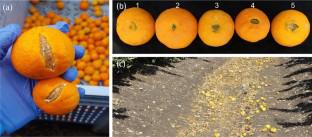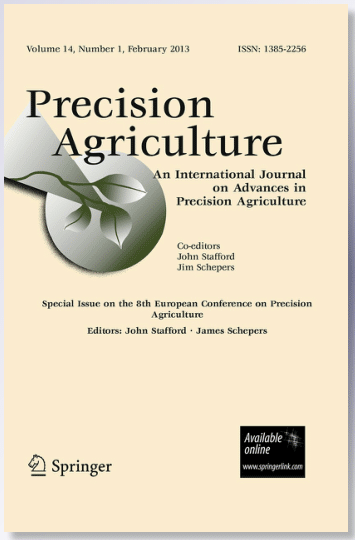Fruit cracking is a preharvest physiological rind disorder in citrus, sometimes causing considerable yield loss. In recent years, reports from Israel and other countries suggest that cracking incidence has increased, which might indicate that climate change intensifies the phenomena. The study aims to develop a machine learning (ML) model for predicting the effect of climate measures (i.e., temperature, radiation, and humidity with daily resolution) along with management and environmental characteristics in two citrus mandarins, ‘Nova’ and ‘Ori’, one is prone to cracking and the other is less sensitive. ML model was developed based on data from approximately 250 citrus orchards across Israel collected over three seasons from 2019 to 2021. Our approach uses TSFRESH to extract and select features and SHAP (SHapley Additive exPlanations) to explain the factor’s intensity using trained classification and regression models based on the H2O-AutoML package. Gathered data skewed toward a low cracking percentage better predicted low and medium cracking levels, with a classification accuracy of 76% and regression mean absolute error (MAE) of 4.78%. Our study reaffirms the genetic background’s primary role in cracking. Notably, our analysis unveils fresh insights into cracking causes needing further exploration. The 40% quantile temperature (23.5 °C) is a novel finding as a learned threshold. ‘Nova’ may elevate cracking by 10%, ‘Ori’ could reduce it by 4%. Additionally, tree age exhibits a linear correlation when trees over 20 years correlate with up to 4% less cracking. These insights are crucial for comprehending, addressing, and managing the phenomenon at a significant spatial scale. The model, with further data support, may provide farmers with an effective tool for treating the severity of cracking incidence by developing a spatial–temporal decision-support system as a protocol to reduce the phenomenon on a regional scale and selecting regions that are relevant for citrus plantations.



